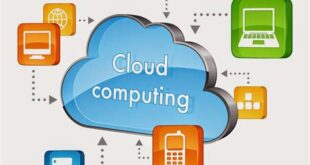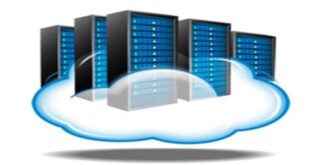
Security Measures and Best Practices
Cloud computing security is a crucial concern for businesses and individuals alike. As more and more data gets stored in the cloud, it becomes imperative to implement robust security measures to protect sensitive information from unauthorized access, data breaches, and other malicious activities. This article will explore various security measures and best practices that can help ensure the safety and integrity of data in the cloud.
Before delving into the specific measures, it is important to understand the importance of encryption in cloud computing security. Encryption plays a pivotal role in securing data by encoding it in such a way that it becomes unreadable to anyone who does not possess the decryption key. By encrypting data before it is stored in the cloud, businesses can ensure that even if unauthorized individuals gain access to the data, it remains indecipherable and useless.
One essential security measure is to carefully select a reputable and trustworthy cloud service provider. Not all cloud providers offer the same level of security, so it is crucial to choose one that prioritizes data protection. Additionally, regularly monitoring the cloud infrastructure and conducting security audits can help identify vulnerabilities and potential threats.
A strong password policy is another vital security measure that every user should adhere to. Weak or easily guessable passwords can put sensitive data at risk. Best practices for password security include using a combination of upper and lowercase letters, numbers, and special characters, as well as regularly updating passwords and avoiding reuse of the same password for multiple accounts.
In addition to strong passwords, multi-factor authentication (MFA) should be employed to add an extra layer of security. With MFA, users are required to provide additional verification, such as a code sent to their mobile device, in addition to their password. This significantly reduces the chances of unauthorized access, as even if a password is compromised, the additional verification step will prevent unauthorized entry.
Regular data backups are essential in ensuring data availability and recovery in the event of a security breach or a catastrophic event. Backing up data to an off-site location or a separate cloud provider can safeguard against data loss and minimize downtime. Cloud providers often offer built-in backup and recovery solutions, making it easier for businesses and individuals to implement reliable backup practices.
An important aspect of cloud computing security is user education and awareness. Training users on best security practices, such as avoiding suspicious emails and links, employing device-level security measures, and understanding the risks associated with sharing sensitive information online, can significantly reduce the likelihood of security incidents.
In conclusion, safeguarding data in the cloud requires a combination of technical measures, user awareness, and proactive security practices. From encryption and strong password policies to regular backups and user education, businesses and individuals must take a comprehensive approach to ensure the integrity and confidentiality of their data. By implementing these security measures and following best practices, users can navigate the cloud with confidence and mitigate potential risks.
Cloud computing is a rapidly growing industry that offers various benefits to businesses. To learn more about it, read our detailed article on cloud computing.
Encryption and Data Protection
When it comes to cloud computing security, one of the most vital aspects is encryption and data protection. In today’s digital age, where data breaches and cyber attacks are on the rise, ensuring the confidentiality, integrity, and accessibility of information stored in the cloud is paramount for businesses and individuals alike. It is essential to understand the significance of encryption and data protection mechanisms in safeguarding sensitive data and preventing unauthorized access.
Encryption acts as a shield, making it incredibly difficult for hackers or unauthorized individuals to make sense of or manipulate the data. It involves converting plain text into an unreadable code, known as cipher text, using an encryption algorithm and a secret key. This ensures that even if someone gains access to the encrypted data, they won’t be able to decipher it without the corresponding key. By employing strong encryption techniques, cloud service providers can ensure that their customers’ data remains confidential, even if it is intercepted during transmission or storage.
Data protection mechanisms, on the other hand, focus on securing data at rest, in transit, and in use, addressing vulnerabilities that may exist at different stages of data processing. These mechanisms encompass a variety of techniques such as access controls, authentication, firewalls, and intrusion detection systems. By implementing robust data protection measures, cloud service providers can enforce strict access controls and policies, ensuring that only authorized individuals can view, modify, or delete the data.
Furthermore, encryption and data protection not only defend against external threats but also safeguard against insider attacks or accidental leakage. In the event of a data breach, where an unauthorized individual gains access to the cloud environment, encryption ensures that the stolen data remains unreadable and useless. Additionally, data protection measures can help identify and mitigate any risks posed by employees or users with malicious intent, ensuring that data remains secure throughout its lifecycle.
It is worth mentioning that encryption and data protection should not be seen as standalone measures. Rather, they should be integrated into a comprehensive cloud security strategy that includes regular security assessments, system patching, employee training, and incident response plans. Encryption alone is not a silver bullet; it needs to be combined with other security measures to provide a holistic approach to cloud security.
Overall, encryption and data protection are essential components of cloud computing security. They provide a robust defense against unauthorized access, data breaches, and other potential threats. By encrypting data and implementing data protection mechanisms, cloud service providers can instill confidence in their customers, assuring them that their data is safe and secure. In an era where privacy and data breaches dominate headlines, encryption and data protection are non-negotiable when it comes to cloud security.
Cloud solutions are becoming increasingly popular among businesses. Find out more about the benefits and features of these solutions in our article on cloud solutions.
Emerging Trends in Cloud Computing Security
Cloud computing has revolutionized the way businesses operate, providing flexibility, scalability, and cost-efficiency. However, as more sensitive data is stored in the cloud, the need for robust security measures becomes paramount. In this article, we will explore the emerging trends and advancements in cloud computing security, ensuring that businesses and individuals can stay ahead of potential risks and protect their valuable information.
1. Artificial Intelligence (AI) and Machine Learning (ML): With the growing complexity of cyber threats, AI and ML have become invaluable tools in the fight against unauthorized access and data breaches. These technologies can detect patterns, identify anomalies, and proactively respond to potential security threats. By continuously learning and adapting, AI and ML-based security solutions can provide real-time protection, reinforcing the overall cloud security infrastructure.
2. Zero Trust Architecture: Traditionally, security measures were focused on securing the perimeter of the network. However, with the rise of cloud computing, the concept of Zero Trust Architecture has gained prominence. This approach assumes that no user or device should be trusted by default, regardless of their location or network connection. Instead, authentication, authorization, and encryption are enforced at each level of access, safeguarding data within the cloud environment.
3. Containerization: Containerization is an emerging trend in cloud computing security that enhances the isolation and security of applications and data. By encapsulating applications in containers, organizations can ensure that their data and processes remain separate and protected from potential vulnerabilities. Containerization also enables faster deployment and scalability, making it an attractive option for cloud security.
4. Multi-Factor Authentication (MFA): Passwords alone are no longer sufficient to protect sensitive data in the cloud. Multi-Factor Authentication adds an additional layer of security by requiring users to provide multiple forms of identification, such as a password, fingerprint, or facial recognition. This significantly reduces the risk of unauthorized access and strengthens the overall security posture of cloud environments.
5. Encryption: Encryption has been a fundamental practice in information security for years. However, in cloud computing, encryption plays a critical role in protecting data both at rest and in transit. Organizations are increasingly adopting encryption techniques that ensure data remains secure, even if it falls into the wrong hands. Encryption algorithms, key management, and encryption as a service (EaaS) are becoming essential components of cloud computing security strategies.
6. Identity and Access Management (IAM): The management of user identities and their access rights is crucial in cloud computing security. IAM solutions enable organizations to control user privileges and ensure that only authorized personnel can access sensitive data. Implementing IAM frameworks and strategies helps prevent data breaches, insider threats, and unauthorized access to cloud infrastructure.
7. DevSecOps: DevSecOps integrates security practices into the software development and deployment process, ensuring that security is not an afterthought but an integral part of the cloud environment. By embedding security controls and continuous monitoring into the development workflow, organizations can proactively address vulnerabilities, detect security gaps, and mitigate risks at every stage of the application lifecycle.
8. Security Information and Event Management (SIEM): SIEM solutions provide real-time monitoring, correlation, and analysis of security events and incidents. By aggregating and analyzing data from various sources, SIEM tools can detect and respond to potential threats quickly. With the ability to collect logs and monitor user behavior, SIEM solutions play a vital role in identifying and mitigating security breaches in cloud computing environments.
As cloud computing continues to evolve, so does the need for robust security measures. Organizations must stay informed about the emerging trends in cloud computing security to protect their valuable data and maintain the trust of their customers. By leveraging AI and ML, adopting Zero Trust Architecture, implementing containerization and MFA, prioritizing encryption, IAM, and DevSecOps, and utilizing SIEM solutions, businesses can fortify their cloud environments and stay one step ahead of potential risks in a rapidly changing threat landscape.
Cloud infrastructure refers to the hardware and software components used to support cloud computing. Discover more about this important aspect in our comprehensive article on cloud infrastructure.
Conclusion
In conclusion, it is crucial to recognize the significance of cloud computing security and to prioritize the implementation of strong security measures to safeguard sensitive data stored in the cloud. With the rapid growth of the digital landscape and the increasing reliance on cloud services, the need for robust security measures has become more paramount than ever.
Cloud computing has revolutionized the way individuals, businesses, and organizations store and access their data. This technology offers numerous benefits, such as scalability, cost-effectiveness, and flexibility. However, it also presents various security challenges that must be addressed to ensure the safety and integrity of sensitive information.
One of the key concerns in cloud computing is the risk of unauthorized access or data breaches. Since data is stored remotely on servers owned by cloud service providers, there is always a possibility of malicious actors attempting to gain unauthorized access to sensitive information. This could lead to severe consequences, including financial loss, reputational damage, and legal liabilities.
Therefore, it is imperative for businesses and individuals alike to implement robust security measures to mitigate the risks associated with cloud computing. This includes strong authentication mechanisms, encryption techniques, and regular security audits. By adopting these measures, organizations can significantly enhance the security of their data and minimize the likelihood of unauthorized access or data breaches.
Additionally, it is essential to prioritize the selection of reputable and trustworthy cloud service providers. Conducting thorough research and due diligence before entrusting sensitive data to a cloud provider can help ensure that proper security measures are in place. Working with established providers who have a proven track record of prioritizing security will offer peace of mind and minimize potential risks.
Furthermore, regular employee training and awareness programs are crucial for maintaining a strong security posture in the cloud. Educating employees on best practices, such as creating strong passwords, recognizing phishing attempts, and reporting suspicious activities, can enhance the overall security culture within an organization. Employees should understand their role in protecting sensitive data and be equipped with the knowledge to identify and respond to security threats effectively.
By prioritizing cloud computing security, organizations can benefit from the immense potential of cloud technology while ensuring the privacy and integrity of their data. The implementation of robust security measures and the continuous evaluation and improvement of these measures are vital in an ever-evolving threat landscape.
In conclusion, cloud computing security should never be taken lightly. It is an ongoing process that requires constant vigilance and a proactive approach. Ignoring security concerns or cutting corners in the implementation of security measures can have severe consequences. Organizations must invest the necessary time, resources, and expertise to ensure the confidentiality, availability, and integrity of their data in the cloud.
Ultimately, cloud computing security is a shared responsibility between cloud service providers and users. Providers must maintain a secure infrastructure and offer robust security features, while users must take proactive steps to protect their data. By working together and adhering to best practices, we can harness the power of the cloud while safeguarding the sensitive information that fuels our digital world.
One of the key components of cloud computing is cloud services. Explore our article to understand how these services play a crucial role in the cloud computing ecosystem.
 Cloud Solution All Cloud Information
Cloud Solution All Cloud Information








